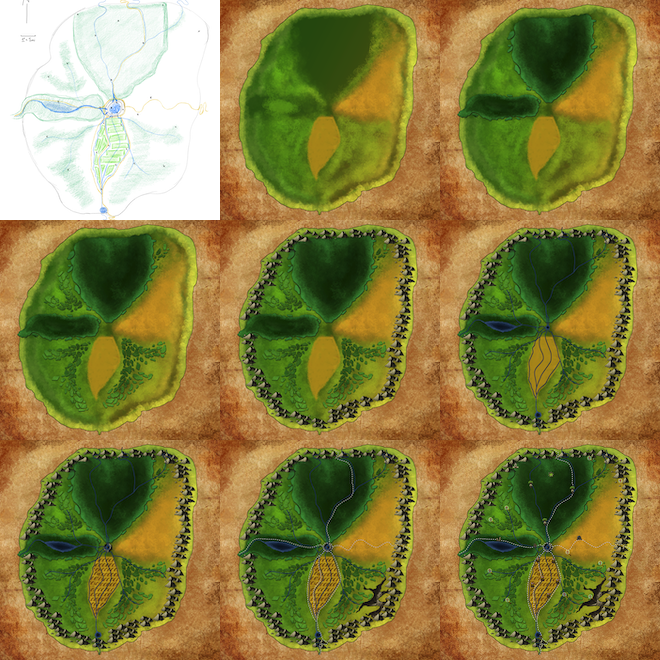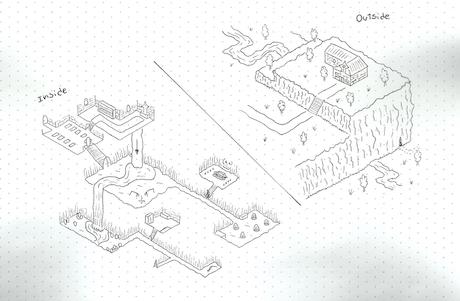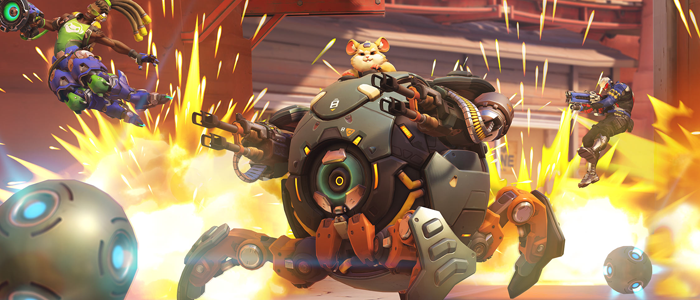No matter the style of game you play, you inevitably are going to use a map. Sometimes the GM is showing you a map of the world to give you perspective on your region. Other times you are drawing a map of the dungeon so that you don’t miss a scrap of loot, I mean, so you don’t get lost. Welcome to another Behind the Screens, as hosted by me, Randal. Let’s take a look at how maps of different qualities can be used to enhance your game!
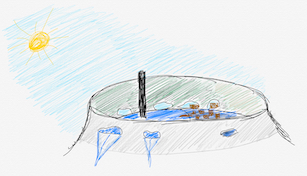
Randal tries to draw Marathis’ Goblet
I am great with words and numbers, and very much not so with art of any kind. I can’t paint, I can’t draw (see my rendition of Marathis’ Goblet to the right), I can’t sculpt. I run games at my home and I tend to rely on premade maps/tiles and miniatures instead of drawing enemies or maps to play on. Even so, I still find myself drawing maps of some kind to show the players where they are in relation to their current goal(s). My simple pencil scratch on paper is sufficient, and certainly has been for decades, but with the current explosion of gaming online and the access to premade art and maps, I sometimes feel like I should spice it up. I simply don’t have the time or desire to improve my artistic talents, so I need to look at other options.
After drawing my own map for Groundbreaking so that I could track the terrain and locations as I write, I decided that I wanted a professional piece of art to go with the amount of time and energy I put into the region. I wrote a bit about using a map to retcon canon here. Using my original drawing along with a series of good questions, Tony “MrKrane” Carter was able to create a beautiful piece of functional art for me. As he made progress, he would send me images to ensure I was happy with the direction he was going or to have me approve a new icon or request. When finished, he sent me copies with various layers turned on or off. It occurred to me that as a GM, I could use different states and quality of maps to provide my players with different levels of immersion in the game. Here are a few of those ideas.
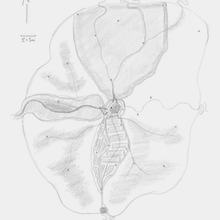
A greyscale rendering of Randal’s map of Marathis’ Cradle.
The Pencil Drawing. Many maps are simply hand drawn, using white paper and grey pencil. Tried and true, there is no reason to stop using this method. If, for some reason, you have issues with immersion when drawing or handing out simple pencil maps, remember that there is a good chance the characters have dealt with maps like that in their world. Unless you are spending good money on a color map with terrain features and keys, most maps you acquire are going to be simple. While it might be ink instead of lead/graphite, or on papyrus or furs instead of paper, the same quality issues are going to apply. Heck, if you find the grizzled old trader in a tavern and convince him to give you a map of his hunting trails so that you can find the wyvern nest, you are likely going to get something akin to a drawing on a napkin anyway. Therefore, you should feel no shame or guilt in handing players a crudely drawn pencil map, heck, make the scale wrong just to add authenticity! I took my painstakingly (again, horrible artist) hand drawn (digital pencil) map and greyscaled it to create a possible pencil sketch handout.
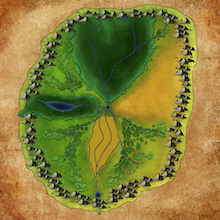
A layer of Tony “MrKrane” Carter’s map of Marathis Cradle.
The Terrain Survey. Maps have locations, but often, the players have no idea what or where those locations are. If you are playing a Kingmaker style game, then you may want a map that simply shows the terrain as seen from above. Wether that is from actual aerial observation (flight exists in many games) or reconstructed from traveling and surveying the old fashioned way, simply providing the terrain as it exists is going to give the characters (and their players) a lot to work with so that they can start to figure out their plan of action. This can work well for battle maps as well as for overland maps (such as those to the right).

A layer of Tony “MrKrane” Carter’s map of Marathis Cradle.
The Key. Of course, having a map without any locations marked on it is only going to do you so good. You are going to need to have all of those locations written down somewhere. If you are doing the art yourself, please remember to put the key on a layer separate from the rest of the art. This will make it super easy for you to make simple changes to the locations without needing to redo any of the actual map itself, as well as being a toggle to turn them off when saving a player version of the map. Heck, you might as well have a Player key layer and a GM key layer so that you can move/copy things to the player’s layer as they discover things. If you are commissioning a map, remember to ask that the key be done on a separate layer (if you are receiving a layered file) or that you receive two copies of the map (one with, and one without).
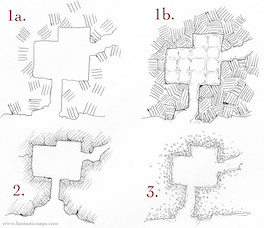
Different dungeon wall styles using only pen and ink.
http://www.fantasticmaps.com/2013/04/dungeon-hatching/
The Dungeon. Depending on your dungeon crawl style, you could end up with vastly different maps. Even if you are using premade maps, tiles, or terrain, it is a rite of passage to draw the dungeon as you navigate it. This often takes the form of the GM drawing for the player that either keeps it or redraws their own copy, but can often simply be a player drawing as the GM dictates directions and distances. For maps such as this, I like to remind players that they are not cartographers sitting at desks with all of their tools and implements available. I allow quick sketches, preferring that they stick to simple maps such as the ones to the right.
Isometric. This is a fascination to me. I only recently have discovered isometric drawing paper, and have marveled at how it took me almost twenty years to hear about it. Even simple sketches, when done isometrically, can render so much more information than a simple top down map can. They do require a little more planning and better awareness of the third dimension, and so even though these can be drawn simply, it might be more hassle than it is worth to draw complex locations and scenes. Even so, I plan to try to start drawing various maps and locations in isometric when that third dimension is going to be important. Since I tend to love designing Zelda style dungeons, it often is!
Well, I hope you have enjoyed this look at various stages and styles of maps, and how I use them in my games. As always, please continue to join us at our Discord server https://discord.gg/Rt79BAj.

